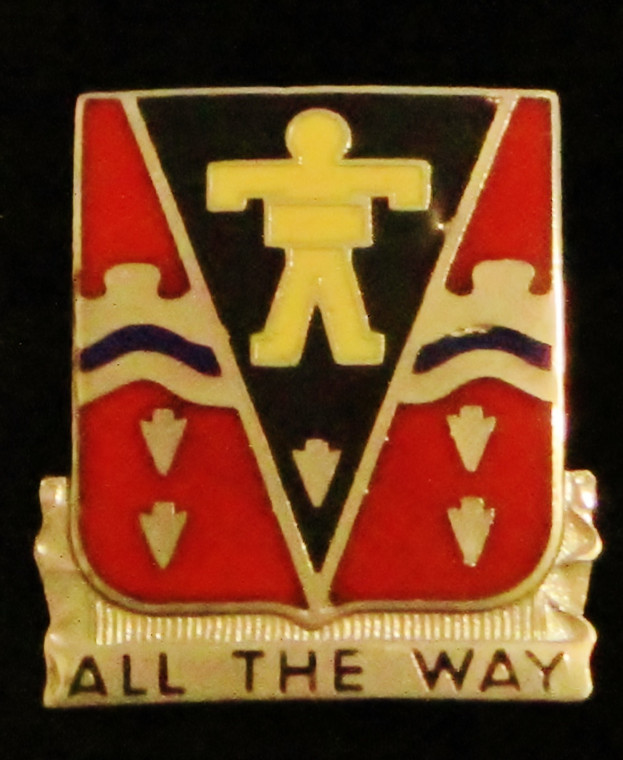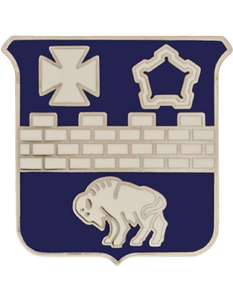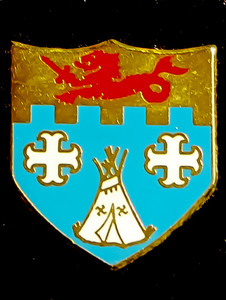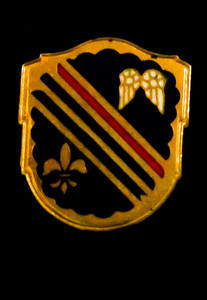
More commonly referred to as a unit crest or a DUI, the 509th Infantry Regiment Distinctive Unit Insignia was originally approved on 30 September 1963. Less than two months later, it was amended to correct the wording of the blazon (description) on 18 November 1963.
The yellow figure on a black pile (point-down wedge) is taken from the pocket patch insignia of the 509th Parachute Infantry, which served as the inspiration for what was probably the first-ever beret flash worn by United States military personnel. Members of the Regiment who were training with the British 1st Airborne Division made a smaller, hand-embroidered version of the patch, which also had the inscription “GERONIMO” below the stylized paratrooper, and wore it on the maroon berets given to them by their British counterparts as a sign of their honorary membership in their Division; the red field of this insignia is an allusion to those berets.
Running horizontally behind the pile is a curvy band (fess) of white and blue—the colors of Infantry—with bulbous protrusions (nebuly), a heraldic design alluding to water; it is a reference to the fact that the parachute mission that took them from England to North Africa on 8 November 1942 was the first-ever parachute assault. The two segments of the fess recall the streamers of Distinguished Unit Citations (today’s Presidential Unit Citation) the Regiment was awarded for gallantry at Carano (Italy) and Liege (Belgium); the nebuly for water is an allusion to the amphibious landing at Anzio in January 1944.
The shape of the black pile simulate a parachute jump; piles are often seen in the heraldry of Engineer units, and here its two sides refer to the ground defense operations the Regiment took part in during both Anzio and in the Ardennes-Alsace Campaign (i.e., the Battle of the Bulge). Five white arrowheads are commemorate the five Assault landings made the Regiment during World War II. “All The Way” is the unit motto.
The DUI is the picture is the one you will receive.






